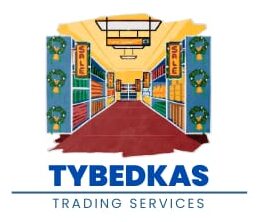The Surge of Education Platforms: Changing Learning in the Digital Age

In the last few years, the landscape of education has gone through a profound change. At the heart of this adjustment is the appearance of education and learning platforms, which have revolutionized the method we access and deliver understanding. These platforms are more than simply digital tools; they represent a standard change in education, driven by technical developments and the expanding need for adaptable, personalized learning experiences.
Education systems incorporate a broad range of solutions and performances, from online training courses and virtual class to interactive simulations and collective peer-to-peer learning tools. They deal with students of every ages, histories, and passions, supplying access to a wealth of expertise and resources previously unbelievable.
Understanding Education And Learning Platforms
Education and learning systems are digital atmospheres that promote the delivery and management of instructional material. These systems are available in numerous types, each developed to address particular educational needs.

They can be extensively categorized right into Knowing Administration Systems (LMS), Massive Open Online Courses (MOOCs), and specialized systems for niche subjects.
An LMS is generally made use of by institutions to manage course materials, assessments, and pupil progress. It works as a centralized hub where instructors can submit sources and keep track of pupil efficiency. Instances consist of Chalkboard and Moodle, which are widely taken on in colleges and schools worldwide.
MOOCs, on the other hand, offer programs to a huge audience, commonly free of charge or at an affordable. These systems, such as Coursera and edX, partner with respected colleges to supply top quality content to thousands of learners all at once.
- Learning Administration Equipment (LMS)
- Substantial Open Online Courses (MOOCs)
- Specialized Educational Platforms
Although these platforms have distinct qualities, they share a typical objective: to make education much more obtainable, interactive, and learner-centered. They utilize innovation to damage down geographical barriers and empower people to pursue long-lasting learning at their very own speed.
The Benefits of Education Platforms
The appeal of education platforms can be credited to a myriad of advantages they provide both learners and teachers. One of the most significant benefits is adaptability. Unlike conventional classroom settings, on the internet systems allow learners to access content anytime, anywhere. This adaptability is particularly valuable for working professionals, parents, and individuals with differing routines.

Another noteworthy advantage is the ability to personalize finding out experiences. Education and learning platforms harness information and analytics to tailor material to private demands and discovering designs. This personalized technique enhances trainee involvement and boosts learning end results by resolving particular areas of strength and weakness.
Furthermore, education platforms often include interactive elements such as tests, conversations, and multimedia web content, making learning more interesting and dynamic. This interactivity fosters a deeper understanding of the material and urges energetic participation from learners.
Difficulties and Factors to consider
While education systems offer various benefits, they are not without challenges. One of the main worries is making sure equal accessibility to innovation and the net. The digital divide continues to be a significant obstacle for lots of students, particularly in remote or economically disadvantaged areas.
- Making Certain Accessibility to Innovation
- Preserving Quality Standards
- Addressing Personal Privacy and Safety Issues
Maintaining the high quality of education is an additional challenge faced by these systems. With the rapid proliferation of on the internet programs, making sure that material is precise, credible, and up-to-date is critical. Furthermore, educators need to be effectively educated to make use of these platforms successfully and provide interesting web content.
Privacy and security issues are likewise paramount, as personal information is gathered and saved on these platforms. Protecting this details and preserving user trust fund are crucial for the ongoing success of education and learning platforms.
The Future of Education Platforms
The future of education and learning platforms is encouraging, with recurring developments in modern technology readied to further improve their capacities. Developments such as artificial intelligence, virtual reality, and blockchain are poised to change the means education is provided and experienced.
Expert system can give even more customized understanding experiences by evaluating information to anticipate and resolve individual learning demands. Virtual fact uses immersive understanding experiences, permitting trainees to check out settings and situations that would otherwise be inaccessible.
Final Thought: Embracing Digital Makeover in Education
As education systems remain to advance, they hold the prospective to equalize education and empower learners worldwide. By welcoming electronic improvement, teachers and institutions can boost the quality and reach of their offerings, preparing trainees for the obstacles of the modern world.
Finally, education platforms represent a considerable change in the instructional paradigm, providing unprecedented possibilities for students to gain access to expertise and skills. As these systems grow and adapt, they will unquestionably play a critical function in shaping the future of education.
